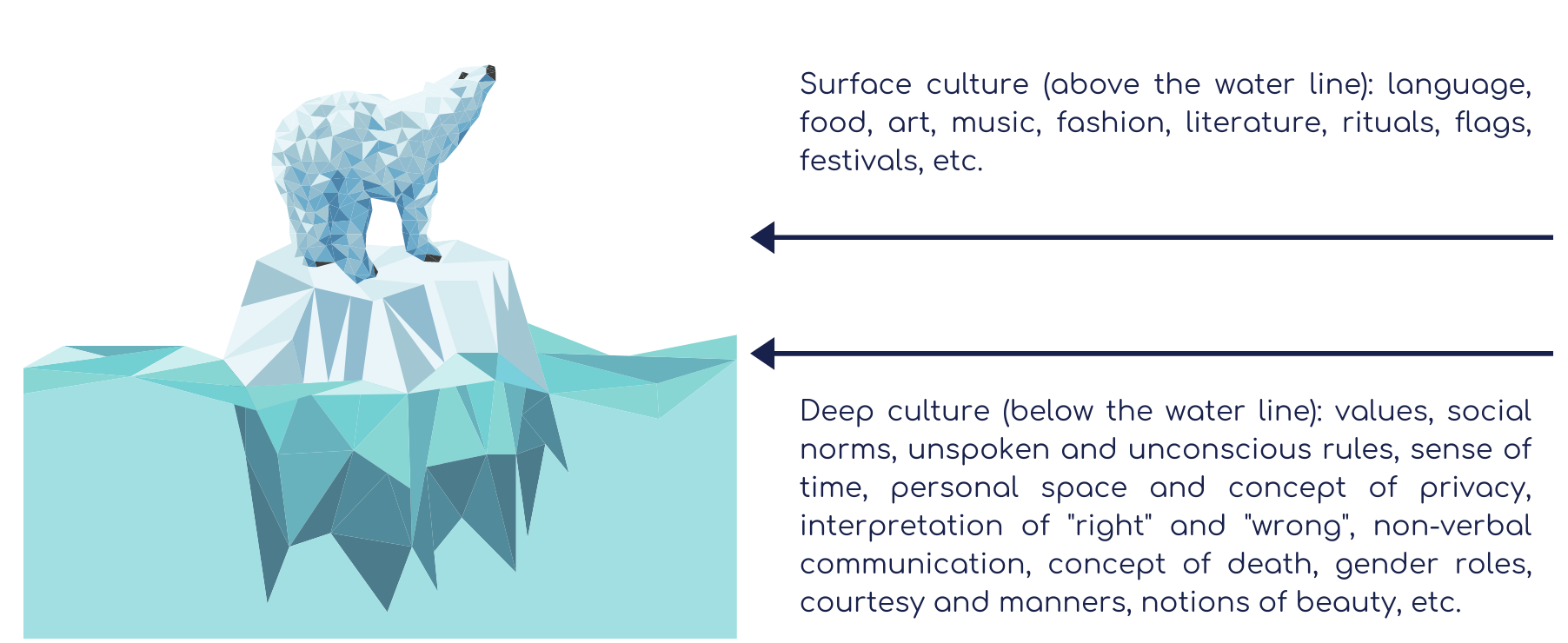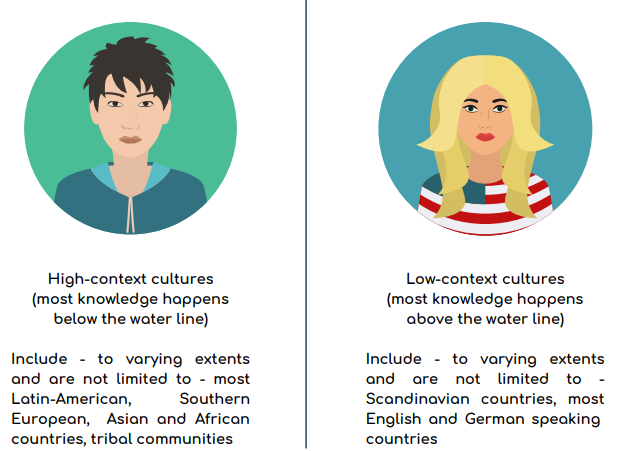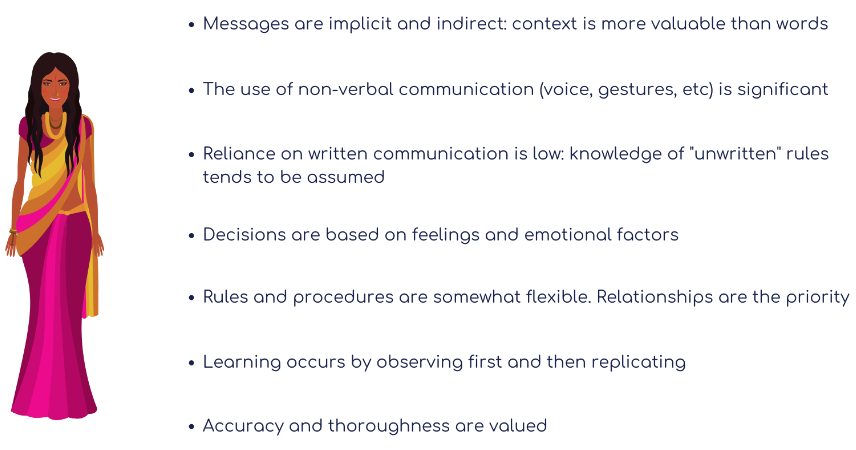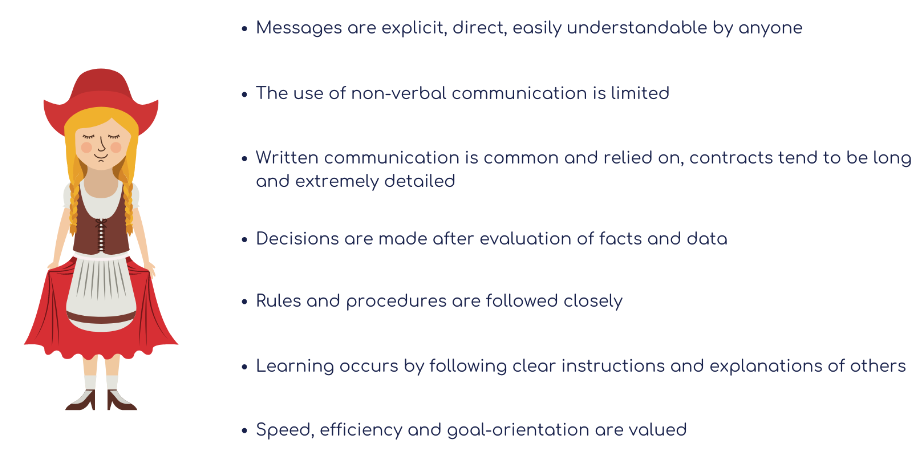The Importance of Context in The Communication Process
Dear Reader, As you may have noticed, Mudita has recently launched its first course (available here): going forward, I will share here on the blog snippets of the courses that are currently on offer or due to launch soon.
Here’s a short preview of the course on Intercultural Communication: hope you’ll enjoy, and decide to enrol for the full version! :)
***
Words are the source of misunderstandings
- Antoine de Saint-Exupéry
***
One of the main characteristics of intercultural communication is that it usually takes place between "strangers": people born and raised in different environments, accustomed to often divergent sets of values and beliefs, which every party considers to be the norm.
During the communication process - that requires both a sender (the party who initiates the communication) and a receiver (the target of the communication) -, a message must be:
- encoded (the sender needs to find a way to make their thoughts understandable to the receiver through the use of words, images, symbols, body language, etc.);
- transmitted through a variety of potential channels, both verbal and non-verbal;
- decoded (the receiver is expected to understand and interpret the message correctly).
Among the several factors that might have a negative impact on the communication process - e.g. the choice of a wrong channel, background noise and other types of distractions, specific jargon only known to one of the parties involved, etc. -, lack of familiarity with the context in which the exchange occurs plays an important role, for people whose cultural backgrounds are dissimilar may interpret verbal and nonverbal messages differently.
What is context, then, and why does it matter?
***
The frame, the definition, is a type of context. And context determines the meaning of things. There is no such thing as the view from nowhere, or from everywhere for that matter. Our point of view biases our observation, consciously and unconsciously. You cannot understand the view without the point of view
- Noam Shpancer -

Interpersonal communication is contextual: therefore, without a proper understanding of context, the communication process is highly likely to be flawed, ineffective, and unsatisfactory.
Context can be:
- Physical: the setting in which communication takes place. The location, the noise level, the time of the day, the weather conditions, are all environmental elements that contribute to a more or less successful communication exchange (see lesson "Bonus Knowledge" on proxemics - the study of human use of space and the effects that population density has on behavior, communication, and social interaction - for further info on this particular point);
- Social: mostly based on psychological factors, social context refers to individual and group norms, behaviors, social dynamics between the people involved (relationship type, level of familiarity with each other, degree of expected formality, etc.);
- Temporal: it considers how communication develops in relation to other events (for instance, the communication process will be vastly different depending on whether two people discuss a happy event or sudden bad news);
- Cultural: it encompasses all aspects - both conscious and unconscious - of a culture (values, beliefs, behaviors, lifestyles, language, power dynamics, etc.), which we will explore in the the upcoming chapters.
Cultural context: about surface- and deep culture
In 1976, anthropologist E.T. Hall developed the iceberg analogy of culture:
he theorized that if culture was an iceberg, some of its aspects (above the water line) would be visible and obvious to everyone, while most of them (the unconscious aspects) would be hidden below the water line and only accessible to outsiders after a certain amount of time spent observing and learning about the new culture.

What do people value the most, a legal document or an informal agreement? Words they can hear/read or the meaning in what is not said? How likely is an Asian customer to appreciate an attempt to get straight to the point during a business meeting?
Perhaps unsurprisingly, our audience can only be fully understood once we gain insight into their "inner functioning": is our interlocutor a member of a high- or a low-context culture? And what are the main differences between the two (note: according to Hall's research, approximately 70% of the world cultures are estimated to be high-context, with high- context indicating a situation where most knowledge happens below the water line)? Let's find out.

In high-context cultures:

In low-context cultures:

Note: no culture is entirely low- or high-context. For example, in North America (low-context) people may resort to high-context communication when dealing with family members or close friends, while the Japanese (high-context) are likely switch to low-context communication when dealing with foreigners.
***
Bonus Knowledge: “The tea dilemma: is a common language guarantee of mutual understanding?”
“In Ireland, you go to someone's house, and she asks you if you want a cup of tea. You say no, thank you, you're really just fine. She asks if you're sure. You say of course you're sure, really, you don't need a thing. Well, she says then, I was going to get myself some anyway, so it would be no trouble. Ah, you say, well, if you were going to get yourself some, I wouldn't mind a spot of tea, as long as it's no trouble and I can give you a hand in the kitchen. Then you go through the whole thing all over again until you both end up in the kitchen drinking tea and chatting.
In America, someone asks you if you want a cup of tea, you say no, and then you don't get any damned tea. I liked the Irish way better.”
- C.E. Murphy, Urban Shaman -

C. E. Murphy is an American-born author, based in Ireland: while her description of the "tea ritual" in the above paragraph isn't of academic nature, what she's perfectly highlighted is the differences between a common scenario in a high-(Ireland) and in a low-context culture (US). Even though English is the most common language spoken in both countries, a simple conversation can take a whole different meaning depending the local context.
Note that the same topic was discussed a few years ago on the blog Irish American Mom, in these terms:
"Today we are going to explore a little cultural nuance between Ireland and America. When visiting someone’s home in America, if offered a drink, always answer “yes” straight away. The offer is made at the start of the visit, with no extended repetitions until you finally accept. The opposite is true in Ireland. If offered a cup of tea, initially it is important to decline. The host or hostess will chat a little, then make their tea offer again. It is at this point the offer should be accepted.
When I first came to America I had no idea I needed to say “yes” on the first offer. One day my Irish friend and I visited a co-worker’s home in Elmira, New York. When we first arrived we were immediately offered something to drink. Being two good Irish girls we declined, in unison.
After about twenty minutes with no further offer of tea or a drink forthcoming, we realized we had missed the boat on that drink. There was definitely no second offer on the way. We experienced this lack of recurrent drink offers on a few more occasions before we finally found the courage to say “yes” straight away.
Americans are very straight forward. No means “no”, and yes means “yes”. No feigned hesitancy required for the sake of politeness.
However, I must make a confession. To this day, even after twenty-something years living in America, I still stutter when I first accept a drink in an American friend’s house. I still feel rude by being so direct, despite acceptance being proper etiquette here. My Irish conscience still urges me to decline politely".
Also, the advice to politely decline the first offer for a tea or a snack, can be found on the website of Doras Luimni, a "non-profit organization working to support and promote the rights of all migrants living in Limerick":
"If you visit someone’s house you will usually be offered a cup of tea or coffee and maybe a snack. It is generally impolite to accept on the first offer, if you are offered a second time it may be considered impolite not to accept something, even just a glass of water."
***
Note: one of the characteristics of high-context cultures is that they tend to be homogeneous, tight-knit communities, low on diversity, which might explain (to some extent) the difference between communication in Ireland and communication in the States even though both countries belong to the Anglo cultural cluster.

